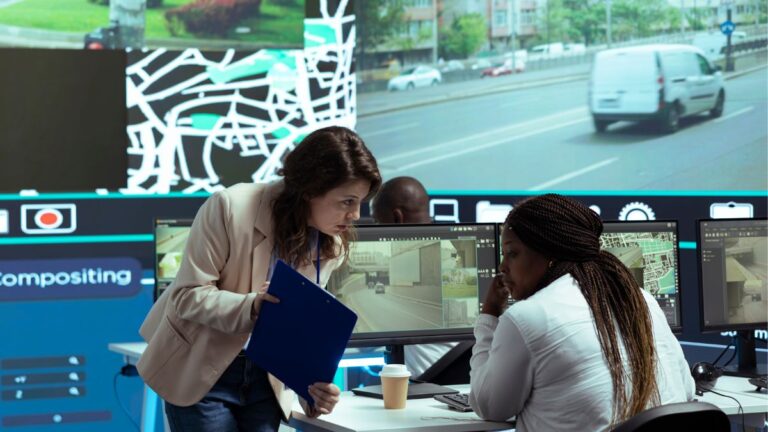Key Takeaways
- Redundant systems provide essential backstops for maintaining uptime in security monitoring operations.
- Disaster recovery in security requires a blend of technology, planning, and ongoing training.
- Risk assessment forms the cornerstone of designing effective redundancy protocols.
- Forward-thinking organizations that prioritize resilience are better positioned for crisis response and continuity.
Why Redundancy Matters in Security Monitoring
Redundancy in security monitoring is essential for building resilience within any security system. By having multiple layers of monitoring and backup systems, organizations reduce the risk of a single point of failure that could leave a facility vulnerable. This approach ensures that if one system goes down due to technical issues or external factors, others can continue to operate without interruption. Redundant systems help maintain continuous surveillance, improve reliability, and increase confidence in security operations.
Solutions like those offered by Quick Response demonstrate how distributed and hosted models can shield operations from natural and human-caused disruptions by keeping alerting and monitoring systems live when needed most. This redundancy allows for quicker identification of threats and supports a faster, more effective reaction to incidents. In security monitoring, maintaining constant vigilance is critical to protecting people, assets, and information.
The Foundation: Assessing Risks and Pinpointing Vulnerabilities
No two organizations have identical risk profiles. Effective disaster recovery planning begins by analyzing the unique risks your facility, assets, and personnel face. Start with a comprehensive risk assessment: evaluate geographic hazards such as floods, earthquakes, and storms; examine the possibility of cyber incidents like ransomware; and consider internal threats or technical malfunctions. Common questions should include: What parts of the monitoring system are mission-critical? Where are the dangerous single points of failure? Which threats—natural or artificial—would most damage your continuity? Mapping these vulnerabilities against real-world impact allows organizations to allocate resources wisely, focusing investments in the most vital and exposed areas. This customization avoids spreading budgets too thin and ensures any added redundancy delivers measurable value.
Components of Redundant Systems
Layered Hardware and Network Setups
Adequate redundancy requires a multi-layered approach to hardware, networking, and connectivity. This includes backup power solutions, communication redundancy, failover servers, and mirrored storage. Organizations are increasingly incorporating remote and cloud storage to reduce risks associated with local disasters. Geographic separation is also crucial, as redundant critical services are deployed far enough apart to prevent impact on other sites. This approach ensures that all security logs, video feeds, and alarm data remain intact and accessible.
Protocol and Process Redundancy
Technological redundancy requires robust human processes and clear escalation plans. Organizations should establish roles, communication chains, and checklists for emergency events. Regular exercises and live failover drills are essential for staff understanding. Training should be cyclical to incorporate new threats and technologies. Well-practiced teams move faster and make fewer mistakes, minimizing service interruptions during disasters.
Integrating Cloud & Hosted Solutions for Flexibility
Modern organizations leverage cloud-based and hosted platforms to build flexible, scalable redundancy in their security monitoring. These solutions offer seamless failover and remote management, enabling decentralized response during power outages, regional disasters, or cybersecurity incidents. Cloud solutions allow instant scalability, democratizing resilience, and preparing small and mid-size businesses for known threats and future risks, resulting in more resilient and adaptable monitoring operations.
Cost Versus Benefit: The Business Case for Redundancy
Creating strong redundancy does require investment in equipment, systems design, and staff training. Yet the real-world costs of downtime are staggering and escalate every year. According to recent disaster recovery studies, enterprises face average losses exceeding $5,600 per minute of IT service interruption, amounting to hundreds of thousands or even millions of dollars during extended outages. For central monitoring operations, even a five-minute outage could delay life safety dispatch or allow an undetected intrusion. The upfront expense of redundant hardware, communications, and cloud failovers routinely pays for itself when an incident occurs, protecting financial interests, brand reputation, compliance status, and the safety of those relying on accurate, always-on monitoring.
Testing, Maintenance, and Continuous Improvement
Proper testing and maintenance of a redundant system are crucial for its effectiveness. Regular failover drills, recovery tests, and stress simulations ensure backups activate as expected and staff can handle real-world events. Reviewing test outcomes and incident logs helps identify systemic weaknesses, and gaps should be addressed immediately. An ongoing protocol review introduces new vulnerabilities and regulatory requirements into disaster recovery. Regular training and variety prevent fatigue and keep everyone sharp.
Building a Culture of Preparedness
True organizational resilience stems from a culture of preparedness embraced at every level, from field staff to company leadership. When everyone is involved in identifying risks, improving procedures, and participating in regular reviews, there is more buy-in and sharper execution under pressure. Encouraging a learning mindset—reviewing drills, sharing lessons after each incident, and celebrating positive responses to real events—keeps disaster recovery at the forefront of operations. It also ensures that as new threats emerge and technology evolves, the team remains motivated and equipped to adapt together, rather than defaulting to complacency or outdated practices.

